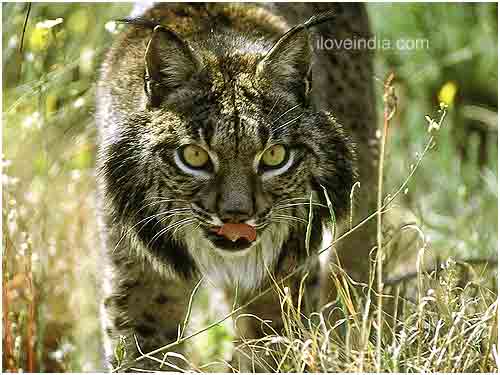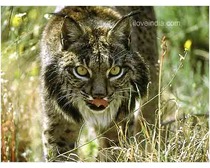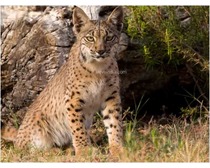Iberian lynx is an interesting feline species, bearing pallid markings and distinct leopard-like spots. Read on to get some more interesting facts and amazing information on Iberian lynx.
Facts About Iberian Lynx
The Iberian lynx (Lynx pardinus) is one of the most endangered species of the feline world. It is also referred to as the Spanish lynx and belongs to the animal family Felidae and the genus Lynx. Native to the Far East in the steppes of Asia Minor, they are now distributed in the Iberian Peninsula in Southern Europe. The species is believed to have evolved from Lynx issiodorensis and arrived in the peninsular zones some one million years ago. Wildlife conservationists and zoologists are constantly striving and working towards the conservation of this feline species. Many reasons have contributed to the sharp decline in the number of Spanish lynx. Some of the major causes include destruction of forests, poaching, predation, decrease in the number of rabbits and even accidental causes. Whatever may be the cause, the imminent disappearance of the lynx, if it happens, will be the first extinction in the feline world. Read on to know some interesting facts and amazing informationabout this unique species.

Facts About Iberian Lynx
Binomial Name: Lynx pardinus
Kingdom: Animalia
Phylum: Chordata
Subphylum: Vertebrata
Class: Mammalia
Order: Carnivora
Family: Felidae
Genus: Lynx
Species: L.pardinus
Height: 60 to 70 cm (shoulder)
Length: 85 to 110 cm (head and body length)
Tail Length: 12 to 30 cm
Weight: 33 to 55 lb (15 to 25 kg)
Life Span: 13 years
Diet: Carnivorous, they eat rabbits, small birds, ducks, hares, rodents, partridge and even roe deer.
Range: Iberian Peninsula in Southern Europe
Habitat: Heterogeneous environments like open grasslands mixed with dense shrubs, trees and mountainous areas covered with vegetation
Age of Sexual Maturity: Males - 1 year; Females - 1 year
Gestation Period: 60 days
Number of Offspring: Two to three
Interesting & Amazing Information On Iberian Lynx
- Iberian lynx is regarded as the most endangered felines in the world. It is also known as the Spanish lynx or the Pardel lynx.
- The mainstay of the Iberian lynx diet is rabbit. However, in the winter season, when the population of rabbits is low, they switch to other forms of food, like ducks, red deer and even fallow deer.
- The major threats to this form of feline life are predators, destruction of habitats and even accidental deaths. This is the only cat which has been recorded in the Category 1 by the IUCN and hence, is one of the rarest mammals on the earth.
- The current wild population of Iberian lynx is believed to be less than 1200,l with only around 300 to 350 females of breeding age.
- The huge reduction in the number of European rabbits, due to the diseases poxvirus myxomatosis and hemorrhagic pneumonia, has had a direct negative effect on the Iberian lynx.
- The energy requirement of the lynx has been found to be 1 rabbit per day.
- Nocturnal for most part of the year, the Iberian lynx have diurnal activity peaks in the winter months.
- Saliega is a female Iberian lynx, which was born in Sierra Morena (southern Spain) on March 29, 2005. This was the first lynx born in captivity.
- A number of wildlife protection units and animal conservation movements are getting involved in the preservation of this feline species. Due to their constant efforts, today, the lynx population seems to have remained steady in the region Doñana.


See also
More from iloveindia.com
- Home Remedies | Ayurveda | Vastu | Yoga | Feng Shui | Tattoos | Fitness | Garden | Nutrition | Parenting | Bikes | Cars | Baby Care | Indian Weddings | Festivals | Party ideas | Horoscope 2015 | Pets | Finance | Figures of Speech | Hotels in India : Delhi | Hyderabad | Chennai | Mumbai | Kolkata | Bangalore | Ahmedabad | Jaipur
- Contact Us Careers Disclaimer Privacy Policy Advertise With Us Lifestyle Sitemap Copyright iloveindia.com. All Rights Reserved.




